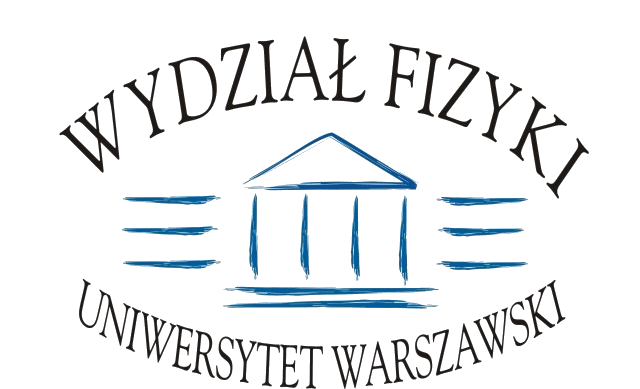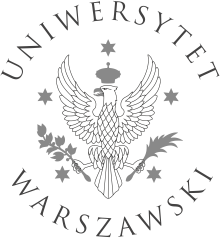Seminarium "Teoria cząstek elementarnych i kosmologia"
2017/2018 | 2018/2019 | 2019/2020 | 2020/2021 | 2021/2022 | 2022/2023 | 2023/2024 | 2024/2025 | 2025/2026
2025-03-27 (Czwartek)
Philipp Schicho (University of Geneva)
Limits and limitations of perturbative approaches to cosmological phase transitions
Scale hierarchies are required to reliably describe the thermodynamics of cosmological first-order phase transitions using perturbation theory. At finite temperature, such a hierarchy is provided naturally. One can then use this hierarchy to construct a three-dimensional effective field theory (EFT) that systematically includes thermal resummations to all orders.Using this EFT setup, I discuss completing the perturbative program for equilibrium thermodynamics of cosmological first-order phase transitions by determining the finite-temperature effective potential of gauge-Higgs theories at their perturbative limit, reaching next-to-next-to-next-to-next-to-leading order (N4LO) [1].I then explore the limitations of thermal EFTs, discussing their regime of validity and the conditions under which thermally induced higher-dimensional operators become relevant for gravitational-wave predictions. [1] A. Ekstedt, P. Schicho, and T. V. I. Tenkanen, Cosmological phase transitions at three loops: The final verdict on perturbation theory, Phys. Rev. D 110, 096006 (2024), [2405.18349].
2025-03-20 (Czwartek)
Nicklas Ramberg (SISSA)
Bubble Nucleation and Gravitational Waves from Strongly Coupled QFT's
Gravitational waves (GWs) emitted during the first-order phase transitions (FOPTs) of strongly coupled quantum field theories (QFTs) present a significant challenge for accurate prediction due to the nature of the strong coupling. In this talk, we will demonstrate a method for predicting the GW spectra of strongly coupled QFTs by combining holography with lattice data from pure SU(N) Yang-Mills theory. We will explore how holography can be employed to construct an effective action and, with this action in hand, investigate bubble nucleation as a means of estimating the gravitational wave spectra. Finally, we will discuss the broader phenomenological implications of our findings.
2025-03-13 (Czwartek)
Tomasz Krajewski (IPPT PAN)
Hydrodynamic studies of accretion in Reissner-Nordström spacetime
Even though, naked singularities are perceived by many scientists only as strictly academic curiosities, solutions of the Einstein equation representing them are not hard to obtain. The well-known Reissner-Nordström (RN) metric is an example that can model black holes as well as naked singularities. It turns out that the RN metric is not only the solution of the Einstein equation coupled to the Maxwell electrodynamics, as it was obtained for the first time more than a century ago, but is also the solution in certain modified theories of gravity.In this talk we will go beyond well-studied accretion onto black holes described by the Kerr metric and investigate the analogous process in the background of the RN one. We will consider both regimes, i.e. when the charge parameter Q is smaller than the mass M of the black hole or when it is greater than M and the metric describes the naked singularity. We will discover new, exciting phenomena like repulsive gravity, levitating atmospheres and much more. Our findings may have applications to astrophysics of the active galactic nuclei (AGNs) with their powerful jets and outflows.
2025-03-06 (Czwartek)
Giovanni Grilli di Cortona (Gran Sasso)
Atoms as electron accelerators
Resonant positron annihilation on atomic electrons is a powerful technique for searching for light new particles that couple to electrons. Precise estimates of production rates require a detailed characterisation of atomic electron momentum distributions. I will present a general method that leverages the Compton profile of the target material to accurately account for electron velocity effects in resonant annihilation cross-sections. Additionally, I will discuss the implications of this precise computation for new physics searches and explore how high Z atoms can effectively serve as electron accelerators, significantly extending the experimental mass reach. Finally, I will demonstrate that by harnessing the relativistic velocities of electrons in the inner atomic shells, a high-intensity 12 GeV positron beam — such as the one planned at JLab — can enable precise measurements of the hadronic cross section, from the two-pion threshold to a center-of-mass energy exceeding 1 GeV.
2025-02-27 (Czwartek)
Bogumiła Świeżewska (IFT UW)
Observable gravitational waves from the early Universe
The discovery of gravitational waves and the advent of space-borne detector LISA makes early Universe cosmology, in particular electroweak symmetry breaking, experimentally testable. In this talk, I will discuss supercooled phase transitions, associated with radiative symmetry breaking, which generically source strong gravitational-wave signal. I will cover a wide range of aspects from the construction of models with radiative symmetry breaking, their renormalisation, through the construction of high-temperature effective field theories needed for accurate treatment of thermal effects to the phenomenological predictions and the prospects of probing fundamental physics models via gravitational waves.
2025-01-23 (Czwartek)
Viatcheslav Mukhanov (Ludwig Maximilian University, Munich)
Gravitationally dominated instantons
We study the decay of the false vacuum in the regime where the quantum field theory analysis is not valid, since gravitational effects become important. This happens when the height of the barrier separating the false and the true vacuum is large, and it has implications for the instability of de Sitter, Minkowski and anti-de Sitter vacua. We carry out the calculations for a scalar field with a potential coupled to gravity, and work within the thin-wall approximation, where the bubble wall is thin compared to the size of the bubble. We show that the false de Sitter vacuum is unstable, independently of the height of the potential and the relative depth of the true vacuum compared to the false vacuum. The false Minkowski and anti-de Sitter vacua can be stable despite the existence of a lower energy true vacuum. However, when the relative depth of the true and false vacua exceeds a critical value, which depends on the potential of the false vacuum and the height of the barrier, then the false Minkowski and anti-de Sitter vacua become unstable. We calculate the probability for the decay of the false de Sitter, Minkowski and anti-de Sitter vacua, as a function of the parameters characterizing the field potential.
Click here to enter the meeting
Click here to enter the meeting
2025-01-16 (Czwartek)
Daniele Perri (IFT UW)
Magnetic monopoles in cosmic magnetic fields: acceleration and constraints
Magnetic monopoles are intriguing hypothetical particles and inevitable predictions of theories of Grand Unification. They should be produced during phase transitions in the early universe, but mechanisms like the Schwinger effect in strong magnetic fields could also contribute to the monopole number density. I will show how we can infer additional bounds on the magnetic monopole flux from detecting intergalactic magnetic fields, and how even well-established limits, such as Parker bounds and limits from terrestrial experiments, strongly depend on the acceleration in cosmic magnetic fields. I will also discuss the implications of these bounds for minicharged monopoles and magnetic black holes as dark matter candidates. Finally, we apply our primordial bounds to monopoles produced by the primordial magnetic fields themselves through the Schwinger effect, deriving necessary conditions for the survival of the primordial fields.
2024-12-19 (Czwartek)
Oleg Lebedev (Helsinki U.)
Predictive freeze-in
Non-thermal dark matter models suffer from the ever-presentgravitational particle production background, which marspredictivity of the framework altogether. I will discuss a classof freeze-in dark matter models with a low reheating temperaturethat are free of such problems and are directly testable.
Click here to enter the meeting
Click here to enter the meeting
2024-12-12 (Czwartek)
Theodoros Papanikolaou (SSM & INFN Napoli)
Primordial black holes and induced gravitational waves
Primordial black holes (PBHs) can generically form through the collapse of enhanced cosmological perturbations, constituting in some specific mass ranges a viable candidate for dark matter. Interestingly enough, the enhanced cosmological perturbations which collapse to form PBHs as well as the PBH energy density perturbations themselves can produce a stochastic gravitational-wave (GW) background induced by second-ordergravitational interactions, which can be detectable in GW observatories. In this talk, afterintroducing initially the motivation for the physics of PBHs and the associated to them GWsignals I will focus afterwards on the ultra-light PBH mass range and its induced GWsignatures through which one can probe the physics of the primordial Universe, theunderlying gravity theory testing as well fundamental high-energy physics theories.
2024-12-05 (Czwartek)
Maxim Laletin (IFT UW)
Revisited axion contribution to dark radiation using momentum-dependent evolution
Axions can be produced via the interactions in the thermal plasma of the early Universe and their contribution to dark radiation can modify the cosmological observables and constrain the axion couplings to SM particles. In my talk I am going to outline an approach to calculate the axion cosmological abundance that goes beyond the approximations widely used in the literature on the topic and demonstrate how it affects the bounds on axion couplings on the example of axion interactions with leptons.
Stron 2 z 3






